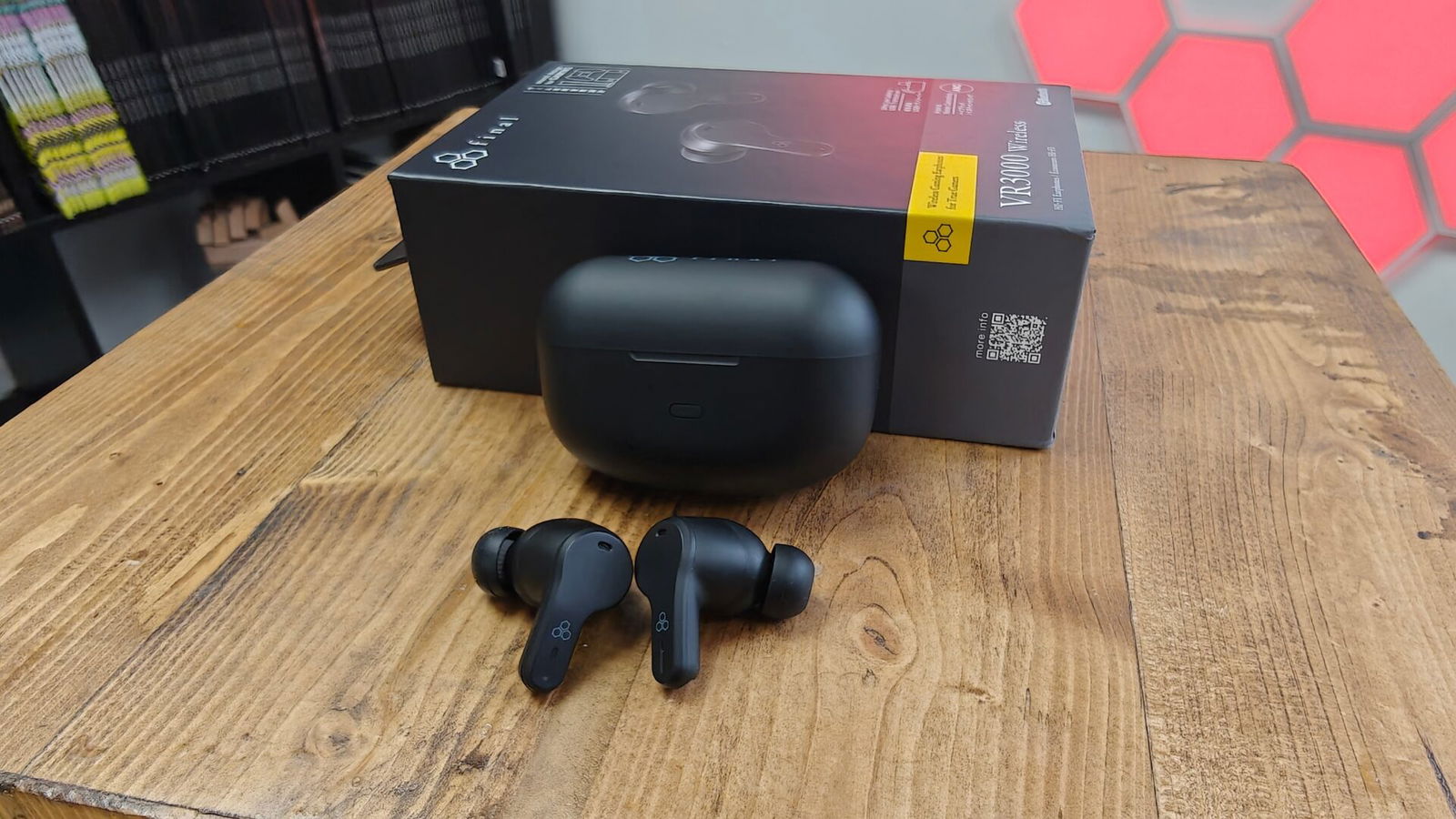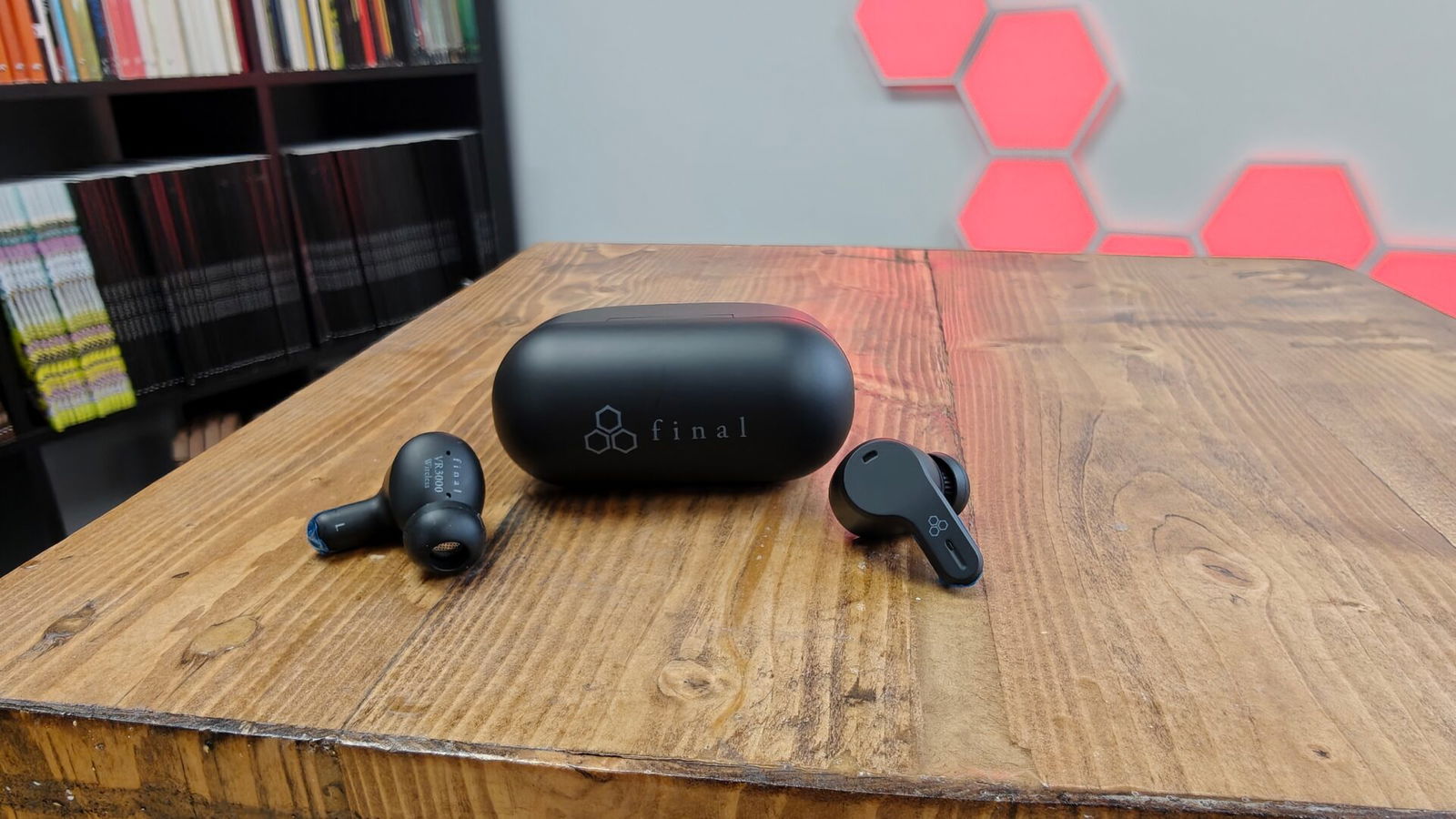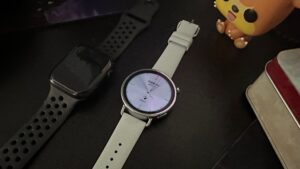Final, a Japanese brand of higher-end headphones and earbuds, recently released their Final VR3000 Wireless, a cableless follow-up to their popular gaming-centric wired solution. Despite having VR in its name, the Final VR3000 Wireless are advertised to work with platforms such as the PlayStation 5 and Nintendo Switch, a fact that interested me in seeing how they would fare on devices such as the Meta Quest 3.
One of the major pain points of wireless earbuds, specifically for gamers, is that they often require a hefty amount of bandwidth, more often than not resulting in noticeable latency, rendering them useless for gaming. Enter the Final VR3000 Wireless. These AirPod-style earbuds feature both Bluetooth 5.2 and compatibility with an included dedicated USB-C transceiver or dongle.

On the topic of the receiver, which features an angled and rounded rectangular design, there is a lack of a compartment within the charging case itself to house the dongle when it is not in use, making it a minor annoyance but a practical one, particularly if you’re like me and have multiple devices to swap between. Circling back to the case, which, like the design of the earbuds themselves, features an understated and simple black colour scheme, forgoing the use of any garish LEDs or gamer-focused accents, making them perfectly suitable for everyday use and not just gaming.
The case features a straightforward LED indicator on the front of the unit, letting users know the charge level of the case to make it easy to have it ready to top off when out and about. The Final VR3000 Wireless earbuds themselves feature a stem design and, although not my favourite, make them relatively easy to stick in and out of both the case and your ears without much fumbling.
“…the Final VR3000 Wireless seamlessly transitions between Bluetooth and its dedicated receiver…”
Outside of the earbuds and the charging case, the Final VR3000 Wireless does not include any USB-C cables in the box, but at this point, most people will have more than one cable to spare. Finally, the earbuds do include four additional silicone tips for the best comfort. Moving on to usability, the Final VR3000 Wireless seamlessly transitions between Bluetooth and its dedicated receiver by simply ensuring that the USB-C dongle is not actively connected to a powered-on device, which will, by default, put the earbuds into Bluetooth pairing mode.

Interestingly, despite the lack of some codec profiles, I found the Bluetooth connectivity on the Final VR3000 Wireless to provide a louder and more dynamic-sounding listening experience, perhaps contributing to the more nuanced control afforded by the Final app, which is available for download on the Google Play Store. Conversely, when using the dedicated USB-C connection, there is minimal control over your listening experience, meaning you are essentially stuck on the pre-determined profile, which isn’t ideal but, in practice, sounds well suited for gaming, which is the primary function of the Final VR3000 Wireless earbuds.
As far as gaming performance goes, the Final VR3000 Wireless earbuds are excellent. Providing solid mid tones, granting a robust sounding soundstage that can accurately recreate directional audio cues, making it easy to isolate footsteps and voices from within your in-game environments. Tapping on the left earbud toggles between various modes, including active noise cancelling and ambient options, which do a decent job of cutting out lower frequency sounds, such as clicking and fan noise, while still providing adequate suppression of louder background elements, such as wind or pedestrian chit chat when out and about.
“One of the standout highlights of the Final VR3000 Wireless Earbuds is its mic quality, which sounds excellent and is comparable to an over-the-ear headset boom microphone.”
One of the standout highlights of the Final VR3000 Wireless Earbuds is its mic quality, which sounds excellent and is comparable to an over-the-ear headset boom microphone, sounding rich and broad without that often tinny-sounding feel associated with earbuds. Sadly, switching between the Bluetooth and receiver highlights a disparity between the overall loudness and nuance of the Final VR3000 Wireless’s driver capabilities, which, when using the dongle, sounds noticeably quieter, although thankfully, still a step above using standard speakers.
On the Meta Quest 3, one of the more lacklustre qualities of the device is its sound capabilities, which, although fine, leave something to be desired with a noticeable sound bleed that can be distracting when used in proximity to others. The Final VR3000 Wireless rectifies this issue with a simple and elegant solution that just works. Testing native Quest games like Batman: Arkham Shadow and Resident Evil 4 provided excellent sound reproduction and nuance.

Still, the real success for me was testing games over Virtual Desktop, which also worked fine, allowing me to enjoy games like Oblivion Remastered and other heavy hitters in VR without latency. It should be noted that using the Final VR3000 uses up the single USB-C port on the Quest 3, which means you may require an adapter for pass-through charging, but as I use a pogo-pin styled charging cradle, this was a non-issue for my use case.
Of course, I had a similar experience when using the earbuds on the products Final actually advertised compatibility for, which I found particularly useful for Switch but equally as impressive on the PlayStation 5, which provided 3D audio support, making it suited for competitive play. Finally, in terms of battery life, the Final VR3000 delivers up to 28 hours of charge with ACN using the case, which bumps up to 38 with it disabled. The actual use time for the earbuds when not in the cradle is 8 hours, which should be more than plenty for most gaming sessions (particularly VR users), making Final’s offering a great choice for most use cases.
Overall, the Final VR3000 Wireless is a solid pair of earbuds tailor-made for gaming while still offering a good experience for everyday use when using the Bluetooth profile.






